Many people have unique medical needs or conditions. They need specialized care in an emergency. To help, you must customize your first aid box. This guide will walk you through the steps. They will help you tailor your first aid kit to fit specific medical conditions. This will ensure you’re ready to handle any situation.

Table of Contents
- I. Why Customization Matters
- II. Assessing Your Specific Medical Needs
- III. Essential Items for Chronic Illnesses
- IV. Addressing Severe Allergies and Anaphylaxis
- V. Customizing for travel and outdoor activities.
- VI. Tips for Creating a Comprehensive First Aid Kit
- VII. Factors to Consider When Customizing Your First Aid Kit
- VIII. How to Organize and Store Your Customized First-Aid Kit
- IX. Educating Family Members on First Aid Kit Use
- X. Maintaining and updating your first aid kit.
- XI. Common Mistakes to Avoid When Customizing Your First Aid Kit
- XII. How to Integrate Your Customized First Aid Kit into Daily Life
- XIII. Staying Prepared for Medical Emergencies
- Proactive Preparation: Customizing Your First Aid Box for Emergencies
- FAQ
Key Takeaways:
-
Consider the specific medical conditions. When customizing your first aid box, think about the common or relevant conditions. These are for you or your family.
-
Remember to include specialized items. These include EpiPens for allergies. They also include insulin for diabetics and specific medications for conditions like asthma.
-
Check and update your first aid box often. You should check its contents and update them as needed. Do this, especially if the medical conditions of those in your household change.
I. Why Customization Matters
Your first aid kit is a crucial component of your medical preparedness. Tailoring it to specific medical conditions can make all the difference. This is especially true in an emergency.
1.1. The limitations of standard first-aid kits.
Some kits lack the right supplies. They can’t handle specific conditions. They’re useful for general emergencies. But, they may not work for conditions like diabetes, allergies, or chronic illnesses.
1.2. The importance of tailoring to specific medical conditions.
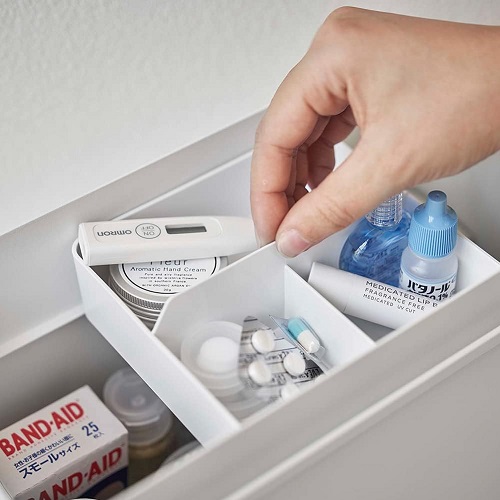
Limits can arise. A first aid kit may not have items to address some conditions. Customize your first aid box to fit specific needs. This ensures you’ve got the right supplies to handle emergencies well.
To fit specific medical conditions, customize your first aid kit. Find out the special needs of people in your household or community. This may include drugs, devices, or tools. It’s crucial for managing specific health issues.
II. Assessing Your Specific Medical Needs
2.1. Medical History Review
To assess your medical needs, start by reviewing your history. Knowing your past medical conditions, surgeries, allergies, and medications can help. It lets you customize your first aid box to fit your needs.
2.2. Identifying Common Conditions
Knowing about common medical conditions you or your family may have is crucial. It helps you customize your first aid box. Conditions like allergies, asthma, diabetes, or heart issues need specific medications and supplies. They should be in your kit.
Conditions like allergies may need antihistamines or an EpiPen. Diabetes may need glucose tablets or insulin. Having an understanding of these conditions can help you prepare for emergencies.

2.3. Customizing for daily life and activities.
Customizing your first aid box to align with your daily life and activities is vital. You may be an outdoor enthusiast, have young children, or do specific sports. Your first aid kit should fit the injuries or medical needs you might have.
Review your daily routines and potential risks. This can guide you in adding items to your first aid box. You can add things. For example, insect repellent, sunscreen, blister pads, or motion sickness medication. This personalized approach ensures you’re prepared for any situation that may arise.
III. Essential Items for Chronic Illnesses
3.1. Asthma

Chronic asthma needs quick access to rescue inhalers, such as albuterol. It also needs a spacer to ensure proper medication delivery. And a peak flow meter to check lung function. You must have a clear plan from your healthcare provider. It’s supposed to cover how to manage asthma attacks and when to get emergency help.
3.2. Diabetes

People with diabetes should have glucose tablets or gels. They should also have a blood glucose monitoring kit and insulin, if prescribed. They should also have snacks like crackers or juice for low blood sugar. It’s important to keep an eye on medication end dates; check and restock the supplies in the first aid box.
Spacers can be a valuable addition to the asthma section of your first aid box. These devices attach to inhalers. They help deliver the medication to the lungs better. This is especially true for people who may struggle to use the inhaler. Include a spacer if your healthcare provider recommends it. It’s crucial for the best asthma management.
3.3. Heart Conditions

Even for chronic heart conditions, you need aspirin (if prescribed by a doctor). You also need nitroglycerin tablets or sprays for chest pain. And a list of emergency contacts, including your cardiologist. Keep these in the first aid box. Learn how to use these medications and devices. Do this in case of a heart emergency.
IV. Addressing Severe Allergies and Anaphylaxis
4.1. Epinephrine Auto-Injectors

Keep epinephrine auto-injectors in your first aid box. Do this if you or someone in your household has severe allergies or is at risk of anaphylaxis. These devices are crucial for treating severe allergic reactions. They should be easy to access in an emergency.
4.2. Antihistamines
Any first aid box designed for severe allergies should also include antihistamines. These drugs can help relieve the symptoms of allergic reactions. These symptoms include itching, swelling, and hives. But, they aren’t a substitute for epinephrine in cases of anaphylaxis.
Also, adding antihistamines to your first aid box can help. They are for mild allergic reactions that don’t need immediate epinephrine.
4.3. Allergy Action Plan

Outline an allergy action plan and include it in your first aid box. This plan should detail steps for allergic reactions. It should include when to give epinephrine and when to seek emergency help. Make sure all family members are familiar with the plan.
Another key part of the allergy action plan is to include emergency contact numbers. These are for healthcare providers and family members. Use them when you need immediate help.
V. Customizing for travel and outdoor activities.
5.1. Travel-Specific Supplies
All travelers should have a basic first-aid kit. They should customize it for their specific medical conditions. Include items like motion sickness medication. Also, bring antidiarrheal medication and items for treating minor injuries.
5.2. Outdoor Essentials
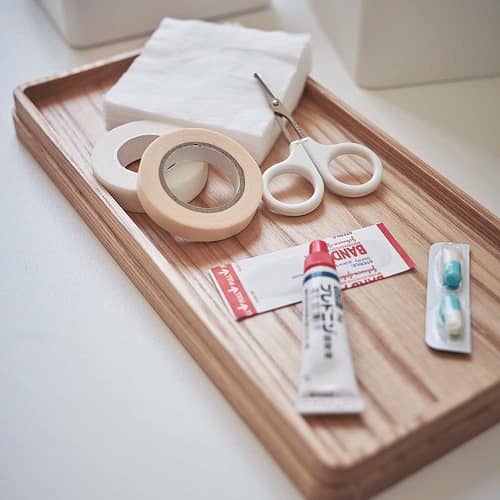
If you’re going outdoors, add items like sunscreen and insect repellent to your first aid kit. Also, add blister treatments and a compact emergency blanket. These items can be crucial for handling common outdoor mishaps.
If you’re going on a hike, camping trip, or any outdoor adventure, it’s important to be ready for emergencies. Pack crucial items in your first aid kit. These items include a whistle, compass, flashlight, and multipurpose tool.
5.3. Emergency Contact Information
Altitude sickness can be a concern when traveling to high altitudes. Include medications like acetazolamide in your first aid kit. Do this if you’re going to a place with a high elevation.
Customize your first aid kit with emergency contact information. This is crucial for quick access in an emergency. Include the names, phone numbers, and addresses of your emergency contacts. Also, include any important medical information.
VI. Tips for Creating a Comprehensive First Aid Kit
Many key components go into making a well-rounded first-aid kit. Here are a few crucial tips. They’ll help you create a complete kit for your specific medical needs.
-
Make sure to check and replace any expired items in your first aid kit.
-
Consider including a list of emergency contacts in your kit. Also, include allergies and medical conditions. It’ll be for quick reference.
-
Customize your kit based on your medical history. Consider any chronic conditions or specific needs you have.
It may seem overwhelming at first. But a custom first aid kit can improve your readiness for any medical situation.
6.1. Over-the-Counter Medications
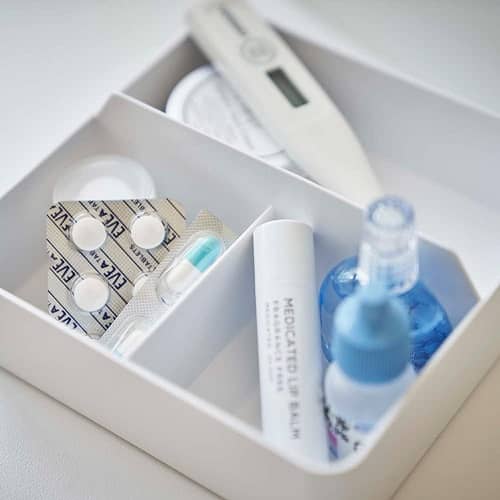
An essential part of any first aid kit is a selection of over-the-counter medications. These include pain relievers, antihistamines, and anti-inflammatory drugs. They help manage common symptoms and minor injuries.
6.2. Prescription medications and equipment.
You must create a section in your first aid kit for prescription medications. You must also include any needed equipment. This is crucial. It’s for managing chronic conditions or emergency situations needing specific treatments. This section should include medications, like inhalers or EpiPens. Also, include any other equipment you need for your medical conditions.
6.3. Wound Care and Blister Supplies
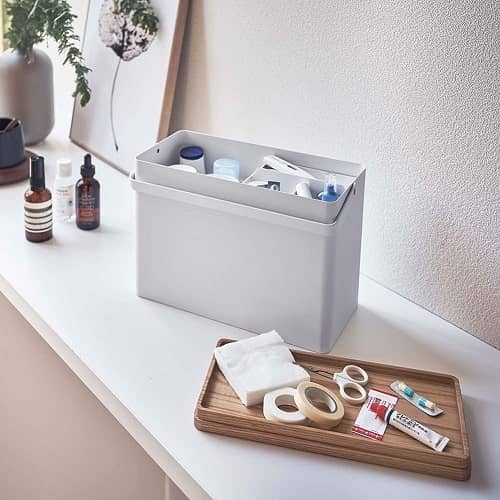
Now, it’s important to include supplies for wound care and blisters in your first aid kit. Items like adhesive bandages, gauze, antiseptic wipes, and blister pads are crucial. They help with minor cuts, scrapes, and blisters. Another item to consider adding is a pair of medical scissors for cutting gauze or tape to the needed size.
VII. Factors to Consider When Customizing Your First Aid Kit
-
Age and health status of family members.
-
Lifestyle and Activities
-
Travel and outdoor plans.
7.1. Age and health status of family members.
Consider the age and health of your family. Use this to make a custom first aid kit. Tailor the supplies to fit specific needs. These needs include medications for chronic conditions. They also include items like band-aids with cartoon characters. It should address any health worries. They may arise based on the age and health of your loved ones.
7.2. Lifestyle and Activities

The first aid kit should reflect the lifestyle and activities of your family members. If you have outdoor or sports enthusiasts at home, consider adding items. These include insect repellent, sunblock, and wound care products. It’s contents should match the activities your family does.
Families often enjoy outdoor activities like hiking or camping. Their first aid kit should include items. These items include blister pads, a snake bite kit, and motion sickness drugs. Always consider the environment and outdoor risks. Do this when customizing your kit. Plus, remember to replace items as needed, based on end dates or usage.
VIII. How to Organize and Store Your Customized First-Aid Kit
8.1. Labeling and Categorization
Now, it’s crucial to label each section of your first aid kit by the medical condition it’s for. Put items like medications, bandages, and equipment in separate compartments. This makes them easy to access.
8.2. Accessibility and portability.
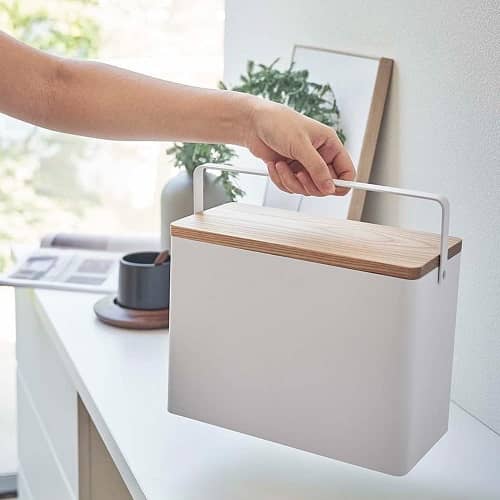
Your first aid kit should be accessible in case of emergencies. Consider storing it in a central location in your home, and it’s portable in case you need to travel with it. Opt for a lightweight, durable bag or case to store your customized first aid imperatives.
Organize your first aid kit so that it’s easy to find items. This is especially important in high-stress situations. Consider using clear containers or pouches for small items and labeling them. This will help you locate the necessary supplies.
8.3. End dates and regular checks.
Some medications and supplies in your first aid kit may expire. So, you should check and replace them as needed. Set a schedule to review your custom first aid kit every few months. Check that all contents are up-to-date and in good shape.
Checks should inspect for expired items and damaged packaging. They should also replenish any used supplies. It’s also good to review the specific medical condition requirements. Then, make any needed changes to your kit. Do this based on new recommendations or changes in the person’s health.
IX. Educating Family Members on First Aid Kit Use
9.1. Importance of Education and Training

With the right education and training, your family members can feel confident. They’ve been able to feel empowered to use the first aid kit well in emergencies. Teaching them to use each item well can make a big difference. It can change the outcome of a medical situation.
9.2. Demonstrating Proper Use of Supplies
You want your family to use the first aid supplies. So, you must show the proper use of each item. This hands-on approach can help them understand how to use the supplies well. They can use them well in different scenarios.
Having the right education and seeing first aid supplies can turn a minor injury into a serious one. Clear instructions and hands-on practice build confidence. They also prepare you to use the first aid kit.
9.3. Encouraging active participation.

One way to ensure that your family members are good at using first aid kits is to encourage them to take part in it. This can include practicing various scenarios. It can involve asking questions. It also involves restocking and maintaining the kit.
Another way to encourage active participation is to involve family members. They can join first aid training courses or workshops. By doing these educational activities together, everyone can gain valuable skills and knowledge. These skills and knowledge can save lives.
X. Maintaining and updating your first aid kit.
10.1. Regular checks and updates are necessary.
Not maintaining a first aid kit can render it ineffective in times of need. Make it a habit to check your kit often. Look for expired supplies, damaged items, or missing ones. Set a schedule to update and replenish your kit to ensure it’s always ready for use.
10.2. Replacing expired or used supplies.
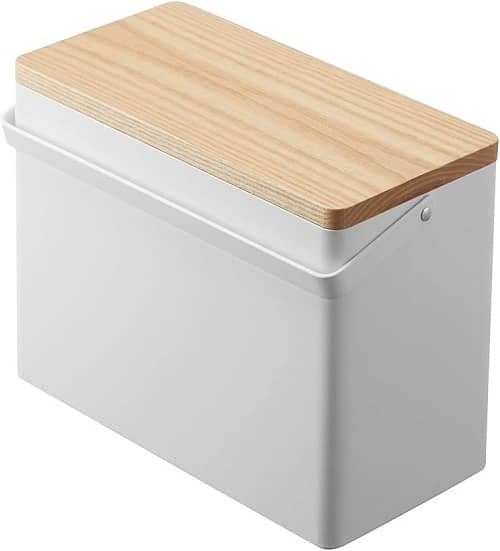
Now, when checking your first aid kit, replace expired or used supplies. This includes drugs, ointments, bandages, and other items. The items are either expired or someone’s used them. Maintaining fresh and functional supplies is crucial for effective first aid treatment.
Also, a well-organized first aid kit lets you see what needs restocking. This ensures you are always prepared for any potential emergencies.
10.3. Staying Informed about New Treatments and Technologies
You must stay informed about new treatments and technologies. Doing so is imperative for updating your first aid kit. Medical care is advancing. It’s crucial to be aware of new products, techniques, and tools. They could improve your first aid. Stay connected to reliable sources. Be proactive in adding innovative solutions to your kit.
Treatments and technology change. Staying up-to-date with best practices and tools can improve first aid care.
XI. Common Mistakes to Avoid When Customizing Your First Aid Kit
11.1. We intend to use insufficient supplies for specific conditions.
Avoid one common mistake when customizing your first aid kit. It includes inadequate supplies. These are for specific medical conditions. You must research and understand the medical needs of people who may need special care. It’s essential to ensure your first aid box can address those needs.
11.2. Failure to consider one’s lifestyle and activities.

It might be tempting to make a generic first aid kit. But, not thinking about the users’ lifestyle and activities can be a big mistake. Different activities and places may need specific supplies. For example, it’s for outdoor enthusiasts. Motion sickness medication is for frequent travelers.
A good first aid kit should consider the risks of the person’s lifestyle. This is key for it’s to be effective in times of need.
11.3. Lack of education and training.
When customizing a first aid box, you must consider the users’ expertise and training. Even a well-equipped kit is useless if the user doesn’t know how to give or use basic first aid. Teaching first aid improves the kit. It makes a big difference in emergencies.
XII. How to Integrate Your Customized First Aid Kit into Daily Life
12.1. Creating a Culture of Preparedness
You must have a custom first aid kit for specific medical conditions. You must also use it in your daily life. Create a culture of readiness at home. This ensures that everyone knows where the kit is and how to use it in an emergency.
12.2. Incorporating first aid into daily routines.
One way to ensure that you use your custom first aid kit well is to add it to your daily routines. Make checking the kit a habit. Replenish used items and practice using them. This will increase the chances of being ready for any situation.
Routines like meal times or bedtime can prompt you to inspect the first aid kit. Search for expired items or replace any items that you’ve used since the last check. It’s a good idea to fit this task into your daily routine. Then, your first aid kit will always be up-to-date and ready to use.
12.3. Encouraging family members to take ownership.

Your first aid kit is only effective if everyone in the household knows how to use it. Encourage family members to take ownership of the kit. They should familiarize themselves with its contents and practice basic first aid. This can make a big difference in an emergency.
You are the first aid kit’s caretaker. You can assign family members to check it or restock it. By involving everyone, you can ensure that the kit is well-maintained. It’s going to be ready when needed.
XIII. Staying Prepared for Medical Emergencies
13.1. Emergency Contact Information
One crucial part of being ready for medical emergencies is having emergency contacts. It’s supposed to be easy to access. Make sure to have a list of important contacts in your first aid box. This includes family, doctors, and emergency services.
13.2. Having a plan in place.
There’s no predicting when a medical emergency might occur, so having a plan in place is vital. Find the closest medical facilities. Learn their emergency procedures. This will help you act in an emergency.
For example, you can make a step-by-step emergency plan. You can share it with your family. The plan can include details on what to do in different medical emergencies. It also says who to contact for help.
13.3. Staying calm and confident in emergency situations.

Some medical emergencies can be stressful and overwhelming. But it’s important to stay calm and confident to provide the needed help. Practice deep breathing. Remind yourself that you have a plan to handle the situation.
Being calm helps reassure the person in need. It also lets you think about giving good first aid while waiting for help.
Proactive Preparation: Customizing Your First Aid Box for Emergencies
It’s crucial to gather vital supplies for specific medical conditions. This is key when customizing your first aid box. Consider the unique needs of people with conditions. These include allergies, asthma, diabetes, and heart conditions. This will help ensure that your first aid kit can provide the necessary care in emergencies. Tailor your kit with medicines, devices, and instructions. Make a kit for each condition. It can make a big difference in a crisis. Be proactive and prepared. Customize your first aid box for specific medical needs.
FAQ
Q: How do I customize my first aid box for people with diabetes?
When customizing a diabetes first aid box, include items. These include blood sugar monitors and insulin. Also, sugar tablets or gel and a list of emergency contacts. It is also important to include a snack for low blood sugar. Also, include a card with the person’s medical condition.
Q: What should I include in a first aid box for allergies?
A first aid box for allergies should contain antihistamines. It should also have an epinephrine auto-injector for severe reactions. It should have hydrocortisone cream for itching and inflammation. It should also have a list of known allergens. Moreover, including a face mask is a good idea. It protects against airborne allergens.
Q: How can I customize a first-aid box for individuals with heart conditions?
To customize a first aid box for individuals with heart conditions, include aspirin. It’s for immediate treatment during a heart attack. Also, include nitroglycerin tablets or sprays for chest pain. And add a list of current medications. It’s also important to have an emergency action plan in case of cardiac emergencies.
Last Updated on August 19, 2025 by Holistic Healths

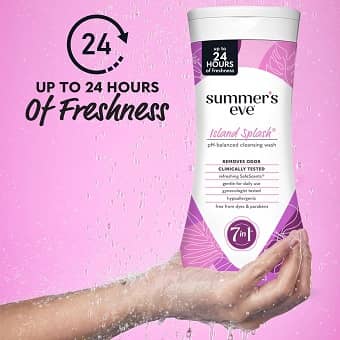



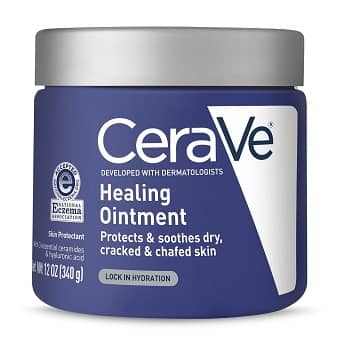
One thought on “How To Customize Your First Aid Box for Specific Medical Conditions”